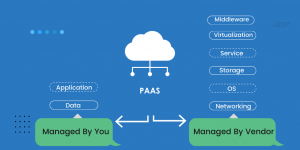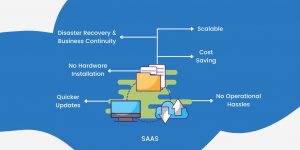Different Types Of Cloud Computing Service Models
Get to know which cloud model to choose, based on business needs and achieve maximum value from the cloud.
Get to know which cloud model to choose, based on business needs and achieve maximum value from the cloud.
Cloud computing services come with their collection of advantages, and new features fit to satisfy the particular requirements of various enterprises. It provides versatility by the different types of services that make cloud computing efficient and viable IT solutions.
It gives liberty to enterprises to define how, where, when, and to what extent they want to adopt this technology.
Cloud computing has evolved. It is divided into three broad service classifications: Platform as a Service (PAAS), software as a Service (SAAS) and Infrastructure as a Service (IAAS), which are explained below:

Infrastructure as a Service (IAAS) is a kind of cloud computing that uses the internet to provide virtualized computing resources. A third-party provider hosts servers, storage, hardware, software, and other infrastructure components on its users’ accounts. IAAS providers also handle tasks, including system maintenance backup and resiliency planning.
IAAS platforms are scalable resources that can be customized on-demand. Other features of IAAS include automation of administrative tasks, desktop virtualization and policy-based services.

Platform as a service (PaaS) is a cloud computing model where a third-party service provider provides a platform to customers to generate, run, and manage software applications without the need to build and maintain the underlying infrastructure themselves.
The benefit of this service is that you can start an application with no monetary investment. All you have to deal with is fundamental development.
Platform-as-a-Service is the fastest-growing sector, from 32% adoption in 2017 to 56% in 2020.
PaaS also helps scalability by its design, making it suitable for businesses that want to maintain a lean operation. It is ideal for companies that revolve around leveraging existing data sources or involving projects demanding inputs from various developers.

Software-as-a-Service (SaaS) is a cloud-based way of providing software to users. SaaS users only need to subscribe to an application rather than purchasing, installing, and maintaining. Customers can log into and use a SaaS application from any device over the internet. The application runs on cloud servers that may be far from where the user is located.